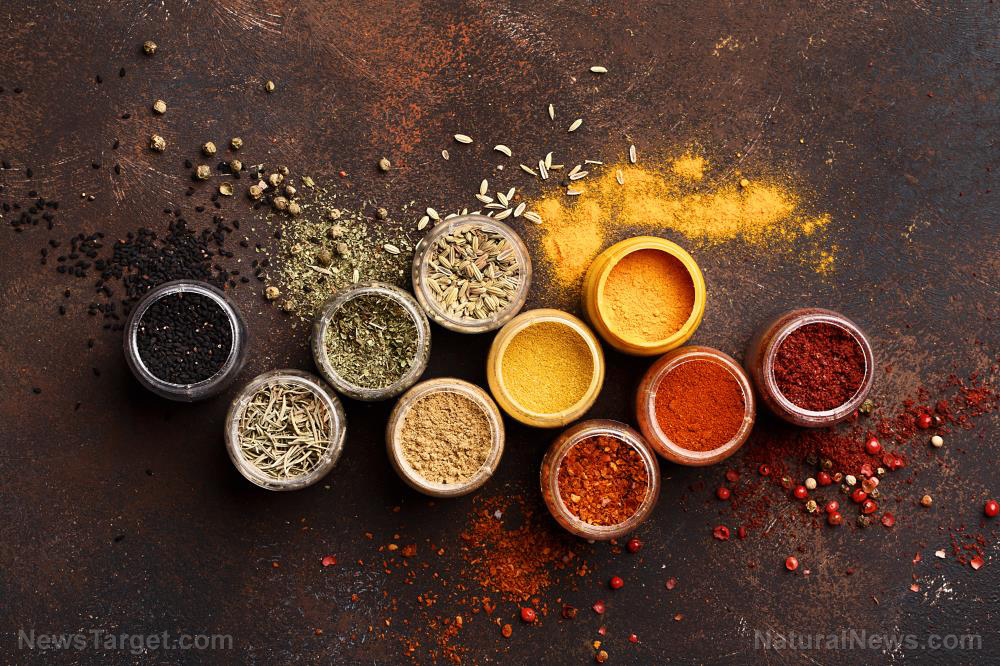3 Ways to Make Food Go Further That Will Help You Now (AND When the SHTF)
by Daisy Luther, The Organic Prepper:
 A lot of folks think those Depression Era techniques for stretching food are only for a worst case, SHTF scenario. But in truth, those ideas are good for every day, because the price of food just keeps going up, up, UP. It’s more important now than ever to make your food go further.
A lot of folks think those Depression Era techniques for stretching food are only for a worst case, SHTF scenario. But in truth, those ideas are good for every day, because the price of food just keeps going up, up, UP. It’s more important now than ever to make your food go further.
The ability to make the food you have feed more people (and leave them feeling full and satisfied) will stand you in good stead if things go horribly wrong. But I think it’s important to do this in the meantime too. If we went back to the ways that our grandmothers made food last during the Great Depression, we could take a big chunk out of our grocery bills, eat more scratch cooking, and stop wasting so much food.
Here are three ways to stretch your food.
Use all your leftovers
One thing that happens a LOT in America is food being thrown in the trash. Up to 40% of our food supply is actually wasted, according to multiple sources. While there isn’t much we can do about food in restaurants or the grocery industry, we don’t have to waste food at home.
That’s where the art of repurposing leftovers comes in handy. Most folks don’t want to eat the same thing over and over again. (Except me – I can eat the same meal for a week straight, and I absolutely love it.) But if you take those leftovers and turn them into something entirely different, then that’s half the battle.
The best thing about using up all your leftovers is that it’s like free food. You are eating the stuff that many people leave in the fridge so long it has to be thrown out. Not you. You’re eating it and loving it.
Here are a few ideas for using up your leftovers.
Leftover Buffet: We have some nice little oven safe dishes that are divided. We use these on “Leftover Buffet Night.” Simply put, all the items from the fridge are placed on the counter. Everyone takes their divided dish and helps themselves to whatever leftovers they’d like for dinner. The dish is then placed in the oven and heated up – sort of like a “TV Dinner” of choice. Aside from the kids scrapping it out over the last enchilada, this is generally very successful.
Puree: I use this technique quite often with leftover root veggies. Using a food processor, puree potatoes, carrots, turnips, parsnips or other root vegetables. You can add milk, broth, or even water to thin the puree to the consistency of soup. Season with garlic powder, onion powder and other appropriate spices, and garnish with a tiny amount of bacon, chives, cheese or sour cream. Other vegetables that are suited for puree are cauliflower, broccoli, and squash.
Pie: This is a great way to use up leftover meat and gravy. In the bottom of a pie pan or cast iron skillet, stir meat that has been cut into bite-sized pieces with gravy. If you don’t have leftover gravy, a creamy soup, a bechamel sauce, or a thickened broth will work. Add in complimentary vegetables, also in bite-sized pieces. We like peas, corn, and carrots with poultry, and green beans, carrots, and potatoes with beef. Add seasoning if needed. Top your pie with either a standard pie crust, cornbread batter, or with a biscuit dough topping. Bake as directed, then allow it to cool for about 5 minutes before serving.
For even smaller amounts of leftovers (or picky eaters), you can use individual sized ovenproof containers or ramekins to make single serving “pies”. I’ve also used muffin tins designed for the jumbo muffins to make individual pies. When using a muffin tin, you will want to make it a two crust pie to enclose the filling.
Pockets: If I bake it in a pocket, my family will eat it. Whether the filling is savory or sweet, there’s something about a piping hot turnover that makes anything delicious. The key with a pocket is that the filling cannot be too runny. So, for a savory pocket, you can mix a small amount of gravy, tomato sauce or cheese sauce with your meat and/or veggies, but you don’t want it to ooze all over the place as soon as someone takes a bite. If you want to eat this as a handheld food, allow it to cool for at least 15 minutes before eating it. You can use pie crust or pizza dough for your pockets. Pizza dough is our personal favorite because it is a bit more filling. I make pockets and keep them in the freezer. I take them out the night before and place them in the refrigerator – by noon the pocket is thawed and makes a delicious lunch-box treat at school.
We like pockets with veggies and cheese sauce; meat, mushrooms, and gravy; meat and bbq sauce; pizza toppings, marinara and cheese; and meat and cheese. Another favorite is empanada style: meat flavored with Mexican spices, mixed with salsa, beans, and cheese. As well, you can fill pockets with chopped fruit that is topped with either cream cheese or syrup for a dessert-style turnover.
Casseroles: The fact is, you can mix nearly anything with a creamy sauce and top it with a crispy topping and you have a tasty down-home casserole. A basic casserole consists of pre-cooked meat, a veggie, a sauce, a grain and a topping. Bake at approximately 350 for 30-45 minutes until bubbly and the top is browned. The less meat and veggies you have, the more cooked grains you should add. Try barley, quinoa, rice, pasta or wheatberries to stretch your casserole. Instant comfort! For toppings, you can use stale bread that has been finely chopped in the food processor, cheese, crumbled crackers, crumbled cereal, or wheat germ, just to name a few items. I often use things that have perhaps become a bit stale – just another way to use up a food that would otherwise be discarded.
Make soup
There is nothing like a pot of soup. It makes the house smell comforting and enticing as it simmers on the stove (or in the crockpot). It’s a delicious and warming meal. But even that isn’t the very best thing about soup. The best thing about soup is that you can feed a LOT of people a hot, satisfying meal for just a LITTLE bit of money.
When I lived in Canada, some nights we had lots of people show up for dinner. On those evenings, I’d add an extra potato for each extra person I hadn’t been expecting. Add a loaf of homemade bread, and I had dinner on the table for however many folks we were feeding.
Here’s another good thing about soup. When I don’t have quite enough leftovers to make 2 full servings for my youngest daughter and me, but it’s a bit more than one serving, I often make soup. I can broth on a regular basis, so it’s an easy thing to grab a jar of broth, chop up the meat and add some vegetables and a grain. You can stretch your soup by adding barley, pasta or rice. If you have fresh bread to serve with it and a little sprinkle of parmesan or cheddar for the top, you have a hot, comforting meal for pennies.
Preservation
The other great way to stop wasting food and make it last long is to preserve it. This is a great way not only to save leftovers, but also to prevent the waste of fresh meat, fruits, and veggies that you don’t have time to eat before they spoil. It means that you can buy things in bulk when they are in season or on sale and put them back to enjoy later when they’d be much more expensive at the store. Preservation is how we enjoy healthy food on a tight budget all year round.
There are three basic ways that we can preserve food simply.
Freezing: Instead of letting your leftovers sit in the fridge and potentially spoil, pop them in the freezer. You can also quickly blanch your fresh fruits and veggies and store those in the freezer. Finally, when you bring meat home from the grocery store, if you aren’t going to eat it in the next day or so, store it in the freezer to prevent it getting shoved to the back of the fridge and going bad.
It’s a good idea to double wrap or vacuum seal food before storing it in the freezer. This can help prevent the dreaded freezer burn.
Dehydrating: My dehydrator runs year round. I have a load of peach slices going right now, as a matter of fact. The dehydrator is a great way to create shorter-term, shelf-stable foods. It’s as simple as slicing your produce thin and laying it on the rack. After that, it dries out with little effort needed from you.
Dehydrated foods can be stored in mason jars or heavy duty ziplock bags. Make sure you have removed ALL of the moisture to reduce the risk of foodborne illness like botulism.
Canning: Water bath canning is a great way to preserve high acid foods like fruits, jams, and pickles. But with pressure canning, the sky is the limit. There are all sorts of delicious ways to preserve meat, vegetables, and entire meals when using a pressure canner. I always have a selection of home-preserved soups on my shelf, ready to pop open at a moment’s notice.
Pressure canning is a little bit time consuming but if you’re going to be home, why not put up a batch of leftovers? When I make soup or chili, I make it in enormous batches so that I can store some in jars for a lazy day. For lots of recipes and instructions on canning your own meals, check out my book The Prepper’s Canning Guide.
How do you make your food go further?
There are all sorts of ways to prevent the waste of food and make your food go further. What are your favorite ways of stretching food?
Read More @ TheOrganicPrepper.ca
Loading...



